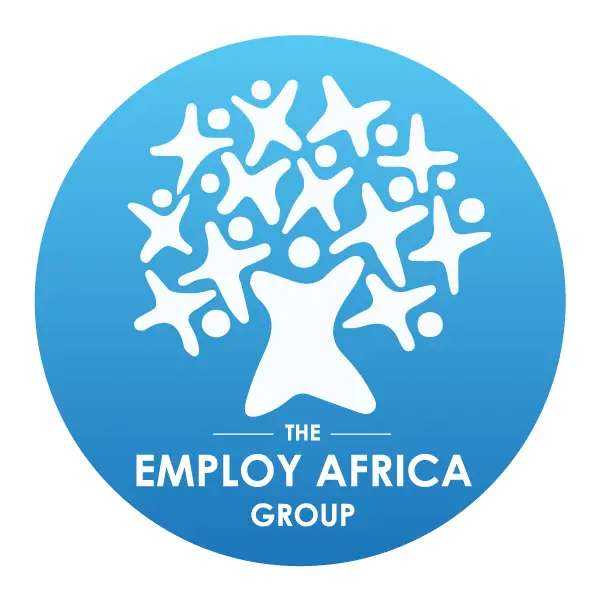Dianne Crofton-Nel – Business Unit Manager – Strategic Workforce Management
09/04/2025
In Africa, immigration for work isn’t just complex—it’s a masterclass in bureaucratic origami. Just when you think you’ve folded everything perfectly, you realize each country requires an entirely different shape. As businesses expand across the continent, understanding these nuances isn’t just helpful—it’s essential for operational success and compliance.
No Single Blueprint Exists
If you’re expecting a one-size-fits-all approach to African work permits, prepare for disappointment. The continent’s 54 countries operate with distinct regulatory frameworks that can make continent-wide expansion feel like playing 54 different chess games simultaneously—each with its own rulebook.
When operating in different countries, it is essential to understand and adhere to compliance requirements, as each nation enforces unique regulations and standards that impact risk management and organizational operations.
In Nigeria, Africa’s largest economy, work permit applications require approval from the Internal Affairs Ministry after securing initial clearance from the Nigerian Investment Promotion Commission. Meanwhile, just a short flight away in Ghana, the process routes through the Ghana Immigration Service with entirely different documentation requirements and processing timeframes.
Kenya’s work permit system categorizes applications into distinct classes based on investment levels and roles, while South Africa’s critical skills visa targets specific professions facing local shortages. Before entering new markets, companies must assess regulatory risks and workforce needs to ensure compliance and successful permit applications. The difference between success and a rejected application often lies in these crucial details.
Your Passport Matters—A Lot
The power of your passport varies dramatically across African borders. While ECOWAS citizens enjoy relative freedom of movement within West African member states, these privileges evaporate once they step beyond regional boundaries.
A European executive might breeze through Morocco’s immigration process given the strong diplomatic and commercial ties, while facing heightened scrutiny in Zimbabwe. Similarly, Chinese professionals may find streamlined pathways in countries with strong Beijing relationships like Ethiopia, while encountering additional requirements elsewhere.
To navigate these complexities, companies must evaluate their current workforce to ensure employees possess the right skills and proper documentation for cross-border assignments.
Even within regional economic communities, the theoretical freedom of movement often clashes with practical implementation at borders. The East African Community theoretically offers labor mobility, but Uganda, Kenya, and Tanzania each interpret these agreements through their own regulatory lens.
Industry-Specific Complexities in Strategic Workforce Planning
Think securing a standard work permit is challenging? Try navigating sector-specific requirements. Oil and gas professionals heading to Angola face additional ministerial approvals beyond standard immigration channels. Tech workers in Rwanda might qualify for special visas through the country’s innovation-focused immigration pathways unavailable in neighbouring states.
In the mining sector, the Democratic Republic of Congo requires specialized work authorizations tied to specific concessions, while medical professionals entering most African countries must secure professional body certifications before immigration authorities will even consider their applications.
To effectively address these sector-specific immigration requirements, organizations should integrate talent management and talent development into their overall organizational strategy. This ensures that workforce planning aligns with business goals and supports the growth and retention of specialized talent needed in each sector.
Financial services professionals face particularly stringent background checks in countries like Mauritius and Botswana, which have positioned themselves as financial hubs with robust regulatory frameworks to match.
The Compliance Moving Target: Risk Mitigation Strategies
Perhaps most challenging is the regulatory fluidity across the continent. Immigration rules can change with limited notice, transforming a well-planned expansion strategy into an urgent compliance issue overnight.
Egypt’s recent overhaul of its work permit system introduced new quotas for foreign workers. Ethiopia’s immigration reforms following political changes created entirely new categories and requirements. South Africa’s critical skills list undergoes regular revisions that can suddenly render previously eligible professions ineligible.
To maintain compliance in this unpredictable environment, organizations should implement regular testing and risk monitoring of their immigration processes, and consistently monitor progress to adapt quickly as regulations evolve.
Why Professional Navigation Matters
This complex landscape isn’t just an interesting academic exercise—it represents genuine business risk. Companies face:
- Project delays from unexpected permit rejections
- Compliance penalties from inadvertent violations
- Competitive disadvantages when key talent can’t deploy quickly
- Strategic limitations when workforce mobility becomes unpredictable
- Legal liabilities arising from non-compliance or regulatory changes
- Potential risks such as operational disruptions, financial losses, and reputational damage
- Strategic management errors that can undermine business strategy and objectives
Business leaders and stakeholders must identify, assess, and develop risk mitigation strategies to address these risks. This involves conducting a thorough risk assessment to evaluate risk factors, risk levels, and determine the acceptable level of risk for the company. An established plan, built on best practices and regular risk monitoring, is essential for an effective risk mitigation process. Risk transfer strategies, such as obtaining an insurance policy from a reputable insurance company, and risk avoidance strategies are important tools to mitigate risk. Companies should also consider risk acceptance and a risk acceptance strategy, ensuring these align with their overall risk appetite. Scenario planning for natural disasters and other risks is critical, and having an action plan in place helps limit setbacks. Strong metrics and informed decisions are necessary for developing and monitoring risk mitigation plans. Involving all the employees and the entire organization in risk management practices ensures comprehensive coverage and effective communication.
For example, one example of scenario planning in action is when a company assessed possible risks to a new product line by modeling the impact of regulatory changes and supply chain disruptions, then created contingency plans to address these scenarios. Ongoing risk management should include assessing and monitoring recurring risks, as well as recognizing recurring risks to ensure they are managed proactively. A robust people strategy and planning for the future workforce are also key steps in addressing workforce mobility risks and supporting the organization’s ability to adapt.
Transform Complexity into Business Strategy for Competitive Advantage
This is where the Employ Africa Group transforms immigration complexity from barrier to advantage. With a footprint in over 40 African countries, we offer specialized solutions through our distinct service offerings:
Our Employer of Record (EOR) services enable you to hire and deploy talent without establishing legal entities in each country, ensuring complete compliance with local employment, immigration and tax regulations.
Simultaneously, our Strategic Workforce Management (SWM) services provide specialised immigration expertise, helping you navigate the complex permit requirements across diverse African jurisdictions.
Rather than building in-house expertise for dozens of different regulatory environments, companies can leverage our established presence and compliance frameworks across the continent.
With Employ Africa Group, you gain:
- Real-time compliance monitoring across changing regulations
- Accelerated immigration processing through established relationships
- Strategic workforce planning that anticipates mobility challenges
- Risk mitigation through proven compliance frameworks
While your competitors struggle with rejected applications and compliance penalties, your talent deploys seamlessly across borders, turning Africa’s regulatory complexity into your competitive advantage.
The African opportunity has never been greater, but success depends on navigating the continent’s immigration complexity with precision. Partner with the Employ Africa Group and transform these challenges into strategic enablers for your business growth.


